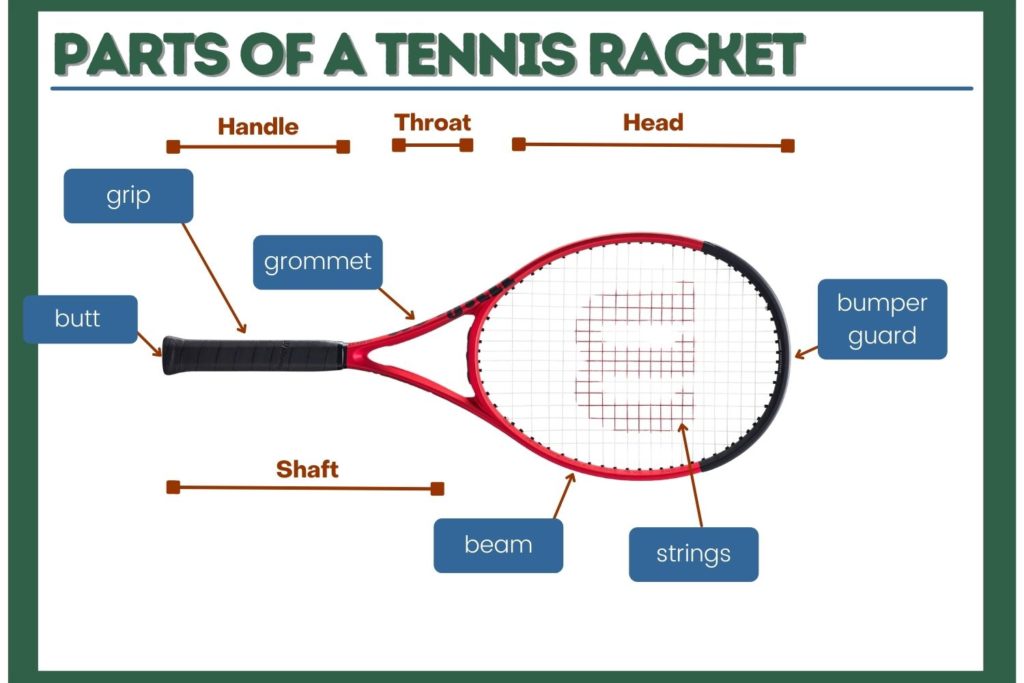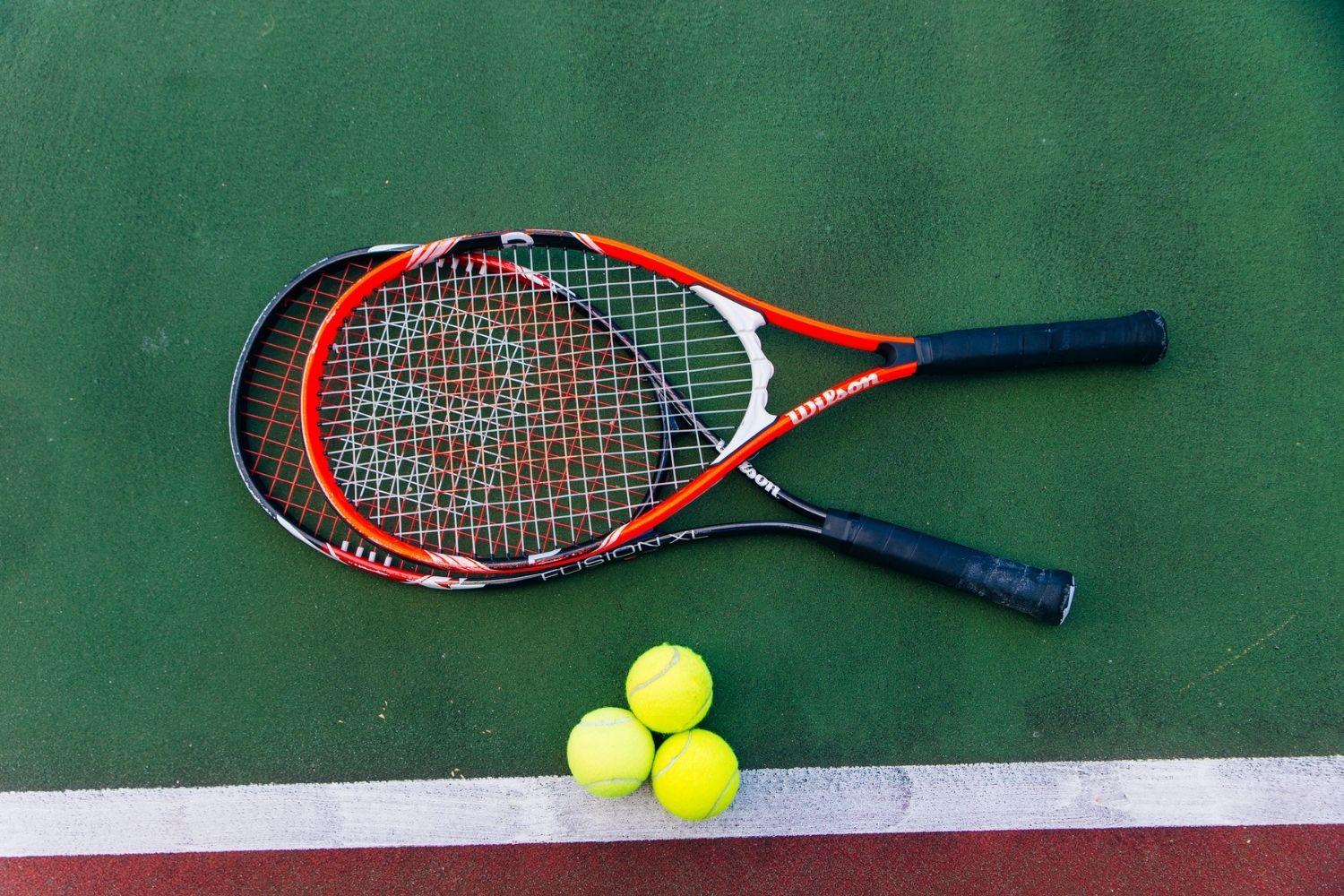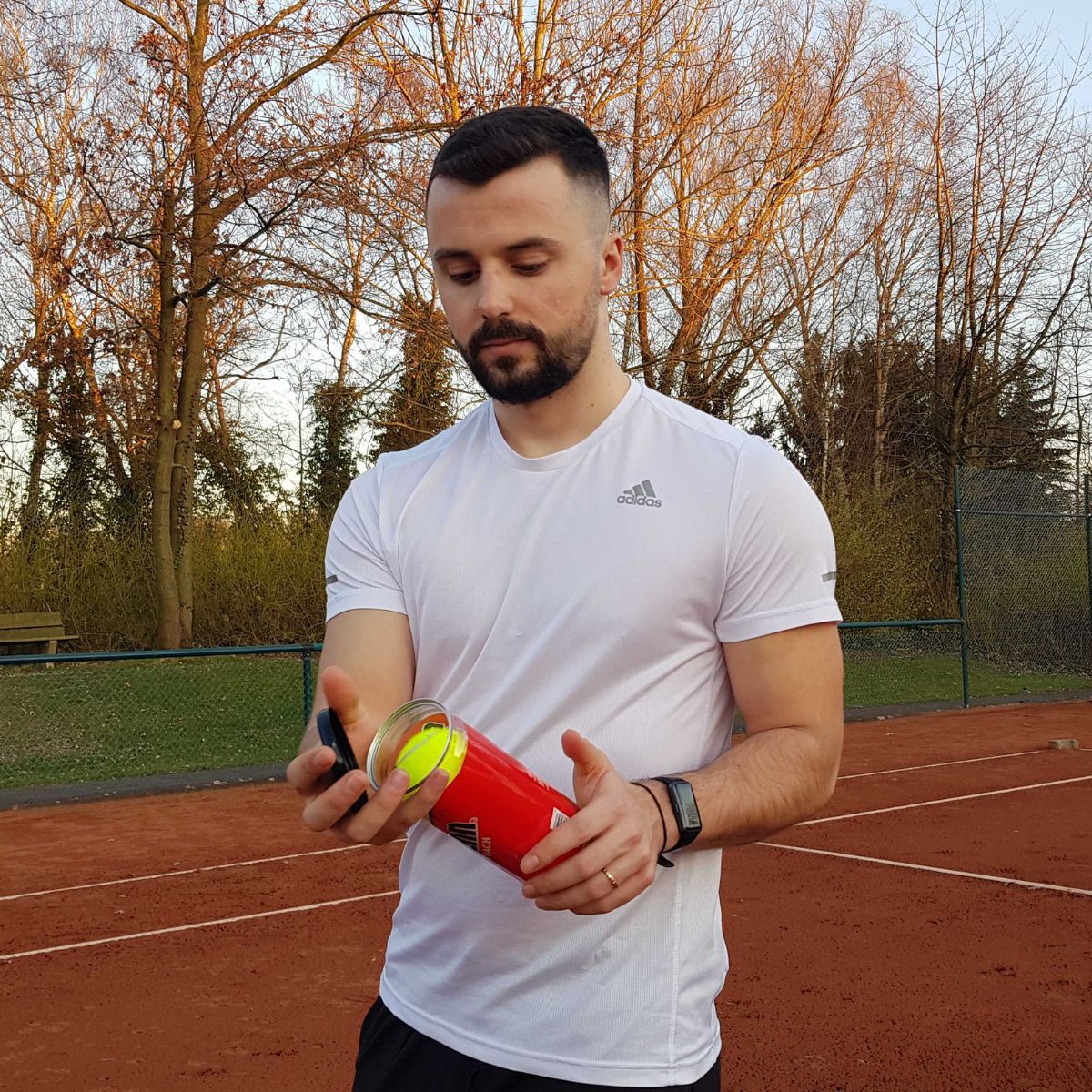Being a beginner in anything is difficult, and the same thing goes if you are just starting out in tennis. There are many words you might be listening to for the first time, and no wonder you feel confused.
One of the most important things you should learn as a beginner are the parts of a tennis racket. It can come quite handy while in practice or on the court since your coach and other players will be mentioning them a lot.
This knowledge of tennis racket parts will help you learn the technical aspects of the game faster, such as the different types of tennis grips. Learning this stuff will also help you when it’s time to try out different tennis rackets and find out which one fits you the best.
Tennis Racket Parts Diagram
Tennis rackets have come a long way since the earliest days of the game. Now, different tennis racket brands use new powerful technology to create and improve their rackets to fulfill the needs and desires of all players from all backgrounds and skill levels.
However, one fundamental thing remains the same: a tennis racket’s anatomy. Different parts have their own individual impact on the overall performance. To better understand the parts of a tennis racket, we created the following diagram:

As seen on the diagram of a tennis racket, a tennis racket has three main parts, the head, the shaft, and the handle.
Before getting more into details, there is one thing I should make clear. When I refer to the tennis racket part, I only mean the components made. The racket specification, which is something you’ll hear a lot when diving deeper into the tennis world, refers to measurable nuances that set racket quality apart from each other.
Parts of a Tennis Racket Explained
It may look simple in design, but a tennis racket is a little bit complex; each part has its own importance. In general, the tennis racket has 13 different parts. All tennis racket part names are listed below:
- Butt cap
- Butt
- Handle
- Grip
- Grip tapes
- Bevels
- Throat
- Head
- Beams
- Grommets
- Dampeners
- Bumper Guard
- Strings
Butt Cap
To learn all the parts of a tennis racket, let’s start with the butt cap. It is probably the easiest to identify since this is where the tennis racket brands print their logo. The but is made of plastic material and increases the size or flares out the racket’s handle. The racket butt is used to ensure that the racket will stay put in the player’s hand.
You can remove these parts to add more balance to your racket if you want. This option makes it possible to adjust the racket’s weight so that you can adapt according to your needs and desires.
But
The part on the handle’s bottom is referred to as the but of a tennis racket. This is where the player usually holds the racket.
Handle
The length where the player places the hand to grab and hold the racket is called the handle. It is important to select the correct size which fits your hand and is comfortable so that you avoid discomfort or even possible injuries on the court.
In many cases, manufacturers are looking to extend the length of the handle, therefore the entire size of the racket, with the intention to increase power and leverage. Usually, the circumference of the handle varies from 4 inches to 4 inches.
Grip
The tennis racket grip refers to the outer part which covers the handle. The material is softer and has a cushioned surface, which is very useful to avoid an uncomfortable experience, and even possible injuries since the handle itself have a very harsh feeling.
The tennis racket grip also prevents the racket from slipping since your hand can get quite sweaty during a game or practice. If you wish, you can replace the grip or wrap an overgrip to adjust it according to your needs and desires. This replacement is usually done for more comfort, absorbing the sweat, or extra traction.
Grip Tape
The part on the top of the handle is called the grip tape. It is useful to secure the grip in its place to prevent the tennis racket from unraveling.
Bevels
At a racket’s handle, there are eight sides, which are called bevels. This part prevents the racket from twisting or rotating in the player’s hand during the games. The bevels are very useful when you are learning the different types of racket grip.
Shaft & Throat
The shaft and throat are both parts of a tennis racket. The shaft is located in the space between the head and the handle. Usually, the old designs of wooden tennis rackets have a closed shaft, while the modern designs feature a closed-shaped shaft. The shaft splits into two sections, extending outwards, which helps to form the formation of the racket’s head.
The throat part of the rackets is the most important element in determining flexibility. Depending on the design, the racket might have a more open throat, which the empty passage allows the air to pass through with ease, increasing flexibility. If the racket is more on the “stiff” side, it provides less flex but generates way much more power during the shots and slices.
Head
The head part of the racket has an oval shape, and it’s where the strings are placed. This is the only surface that had direct contact with the tennis ball during the hits. There is a wide range of different sizes, which vary from racket to racket, depending on the design.
Usually, the sizes are from 95 inches up to 110 inches. For beginner’s tennis rackets, the head size can be significantly larger, which allows the player a higher margin of error, and is more forgiving.
The size of the head is important because it directly influences the level of the racket’s power and control. A tennis racket with a larger head allows the player more power during the hit, but a smaller head offers more control over the ball.
Beam
The sides of a tennis racket are called beams. This part is often overlooked, which is a mistake, considering the fact that the beams play an important role in a racket’s performance. Depending on the tennis racket’s type, the beamer might be of thick or thin material.
A thick and wider beam makes the racket stiffer, which allows the strings to move more freely during the hits. This helps the players to generate a greater level of power. On the other hand, a smaller and thinner beam limits the movement of the strings, which helps to increase the level of control a player has.
The size of the beam is an important factor you should consider before purchasing a new racket, depending on the features you are looking for. If you are a beginner, the easiest way to notice the difference between the beamer’s sizes is by comparing them side by side.
Grommet and Grommet Strips
Grommet and grommet strips make an important role as parts of a tennis racket. Grommet strips are little plastic material located around the frame of the tennis racket. Their main function is to protect the strings from their sharp edges and prevent rubbings in between them.
The little rigs or tunnels around the inner periphery of the racket’s head are called grommets.
Depending on the design and the width, grommets might increase or limit the movement of the strings. Power rackets have wider grommets width, which allows a more free movement of the strings. On the other hand, the narrow width of the grommets limits the movement of the strings but increases the level of power that the player has over the racket.
Dampeners
The little tennis racket parts on the string face just outside the crossed strings are called dampeners. They are made of rubber material, and their only function is to alter the sound of the racket after the hit impact. Dampeners are optional and can be removed.
Bumper Guard
The outside part in the edges of the frames is called bumper guards. Its function is to protect the racket from the shock impact during the hit or when it contacts the ground. Bumper guards should be changed constantly to avoid damage and keep the racket in better shape for a longer time.
Strings
The thin cords that are located around the head of the rackets are called strings. Their material provides a trampoline-like motion on the hitting surface. Strings have a major impact on the tennis racket performance, as it plays an important role in the spin, speed, control, power, durability, etc.
There is a wide range of tennis string varieties, depending on their material, thickness, or the tension they create.
There are two types of strings.
- Main strings – the ones that run in a vertical position.
- Cross strings – the ones that run in a horizontal position.
The combination of main and cross strings creates the face of the tennis racket.
Wrapping Up
Congratulations, you just learned all parts of a tennis racket. I know a lot of information might feel overwhelming at first, but that’s okay. Whenever you don’t remember something, you can just return here and refresh your memory until you have no problem differentiating the tennis racket’s parts.
I know that being a beginner can be hard and sometimes frustrating. That’s why this article aims to teach basic knowledge, which will help a beginner be more insightful. Having a better understanding of your tennis racket parts will increase your confidence on the court and, with time, will also help you start mastering the game.
This information is essential, as it can also help you make a better choice when you have to pick what tennis racket suits you best and fulfills your needs.

